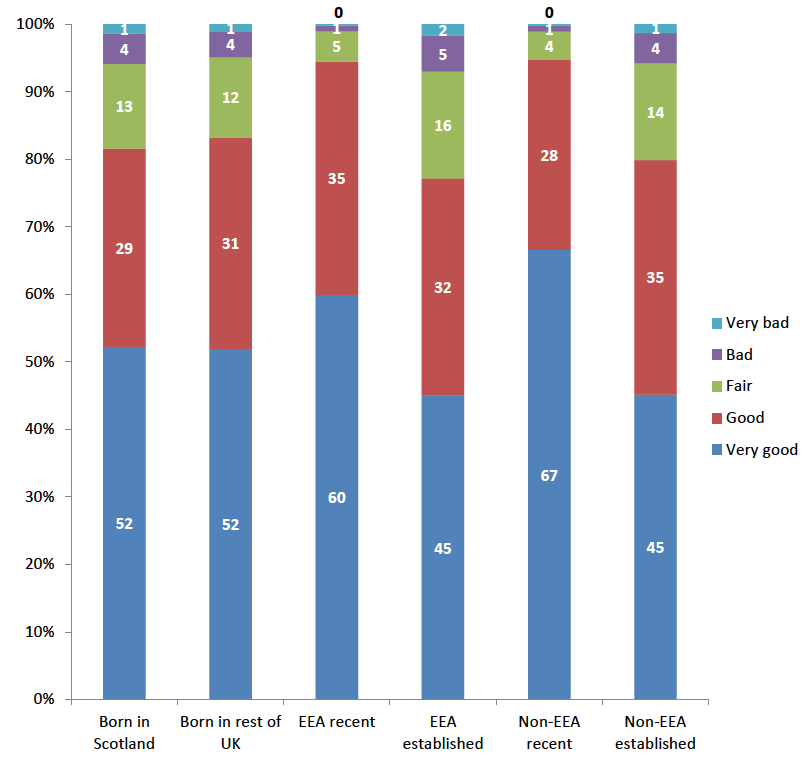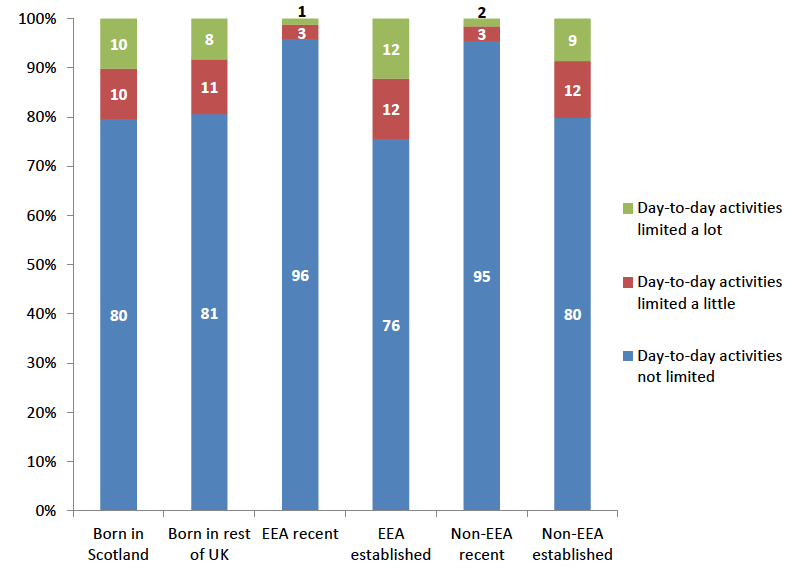Characteristics of migrants in Scotland: analysis of the 2011 census
Analysis of data from the 2011 census on the characteristics of migrants in Scotland. This is a revised version of a report published in March 2015.
5. Health
Self-assessed health
Assessing their own health, 95 per cent of both EEA recent and non- EEA recent migrants recorded that it was 'good' or 'very good.' This compared with approximately 80 per cent of people born in Scotland and the rest of the UK and 77 per cent of the EEA established group. Given that younger people are likely to have better general health, and the majority of recent migrants are in the younger age groups, the pattern between and within the groups is not surprising. See Chart 5.1.
Chart 5.1. Self-assessed health: Scotland-born and all migrants

Source: Scotland's Census 2011 - NRS: Table AT_093b_2011
Long term health problem or disability
Chart 5.2 provides further evidence that recent non- UK migrants are healthy. Just 4 per cent of recent EEA and 5 per cent of recent non- EEA migrants reported that their day-to-day activities were limited 'a little' or 'a lot' by long-term health problems or disabilities.
The pattern across the Scotland-born population, people born in the rest of the UK and the established EEA and non- EEA migrant groups was similar, with approximately one in five people reporting such health problems or disabilities. As with self-assessed health, it is likely that this is due, at least in part, to the older age profile of people in these groups.
Chart 5.2. Long-term health problem or disability: Scotland-born and all migrants

Source: Scotland's Census 2011 - NRS: Table AT_086b_2011
Contact
There is a problem
Thanks for your feedback